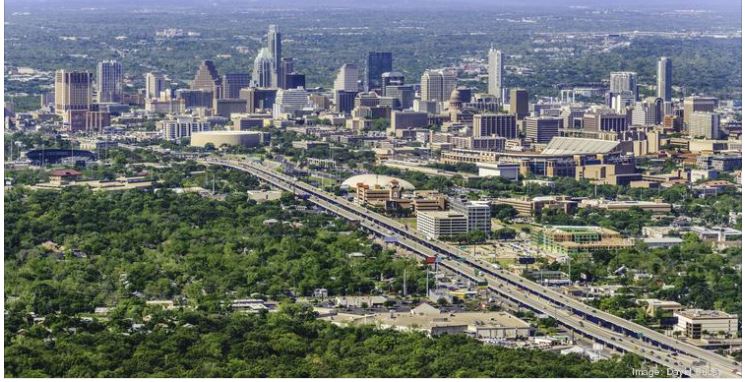
As residents of San Antonio, Austin and the areas in between look to the next decade and beyond, it is clear that growth is inevitable. The stretch between the two cities is one of the fastest-growing regions in the United States, and according to The Greater Austin-San Antonio Corridor Council, is expected to grow by more than 2 million people in the next 10 years.
Between the booming economy, affordable cost of living, higher education opportunities and diverse culture, people from all over the country have sights set on the Lone Star state. The Austin-San Antonio corridor carries the appeal of untapped potential, and the increasing attraction has created a sense of urgency to meet the demands of a growing population.
Growth is on the horizon, and at present the region needs to continue to prioritize solutions to accommodate that growth. If San Antonio and Austin are interested in competing on a national level, both cities will require the infrastructure and workforce development needed to meet the demands of an influx of residents, including career opportunities, a desirable quality of life and world-class public facilities. If our hope is to have future generations continue to live in the region, support for such projects will be necessary to help retain and grow the value of our investment.
Not only will it be critical to accommodate new Texans, but our communities will also simultaneously need to balance new projects by continuing to update existing infrastructure. Now, more than ever, community support of public projects can determine whether the region can continue to be economically competitive on a national level. The booming population predicted will require new construction at a much more rapid rate. Thankfully, as a region, our leaders have already started to prioritize and have developed comprehensive plans to ensure needs are met for the future.https://e51ce912cda84d7ee3a4a7f909c05ba8.safeframe.googlesyndication.com/safeframe/1-0-37/html/container.html
RECOMMENDED
COMMERCIAL REAL ESTATECrane Watch: Pandemic didn't stop high-profile developments from breaking groundCOMMERCIAL REAL ESTATEFirstmark Credit Union to open two new financial centers in 2021FOOD & LIFESTYLEEl Mirasol to open new location next month
For years, the I-35 corridor has served as a connection between the growing urban hubs of San Antonio and Austin. It has already begun to develop into something much more than a means of transportation. As I-35 continues to grow and development occurs between the cities, there will be an increasing need to make both local and regional improvements. These rising concerns require big solutions.
Some of these issues can be addressed with short-term measures. However, the region also needs robust long-term plans such as the city of Austin and CapMetro’s Project Connect, which addresses long-term mobility for residents. Without the support of Austin residents to push forward such efforts, it will be challenging to obtain the funds required to build comprehensive transportation solutions that include investments in a light-rail system forecasted to have a weekday ridership of over 61,000.
Additionally, there will be an increasing need for expanding educational facilities from primary schools to community colleges and universities, which will require public support to give our region a competitive edge in an ever-changing economic environment. Public investment both in new development and continued capital improvements, which in certain areas may already be overdue, will allow our region to have a level playing field in the quality of education offered to the influx of new families.
It is essential to look at these projects as a solution not only for further population growth, but also through a lens of equity in opportunities for future generations that addresses longstanding disparities in public education options.
Public agencies, including school districts, require bond programs to expand and satisfy growing communities, as well as to renovate and expand, as needed. As with the Austin ISD bond program overwhelmingly approved by voters in 2017, the San Antonio ISD 2020 Bond program and the Let’s Vote Yes SAISD! campaign will make all the difference in creating an educational system that will prepare the next generation of students in our region. Projects such as these are ready to move forward, and with the support of community members, they can.
Not all individuals recognize the financial impact of a successful bond program. However, without the support needed, the road to development and progress may prove difficult. Projects funded through bond dollars can help deliver tangible impacts that benefit a community both immediately and long-term.
While the next several years offer endless opportunity for the Austin-San Antonio region, there is much work to be done. By uniting in support of critical public investments, both cities can prepare for a bright future ahead.
For more information about Raba Kistner, visit www.rkci.com or call 210-699-9090.
Founded in 1968, is a premier engineering consulting and program management firm. Raba Kistner has grown over our 50-year history, expanding from our headquarters in San Antonio, Texas, to an Engineering News-Record “Top 200 Firm” of more than 550 employees operating coast-to-coast from California to New York and all across Texas.
Mike Frisbie is the senior vice president and marketplace leader for San Antonio and Austin with Raba Kistner, a premier engineering consulting and program management firm.












